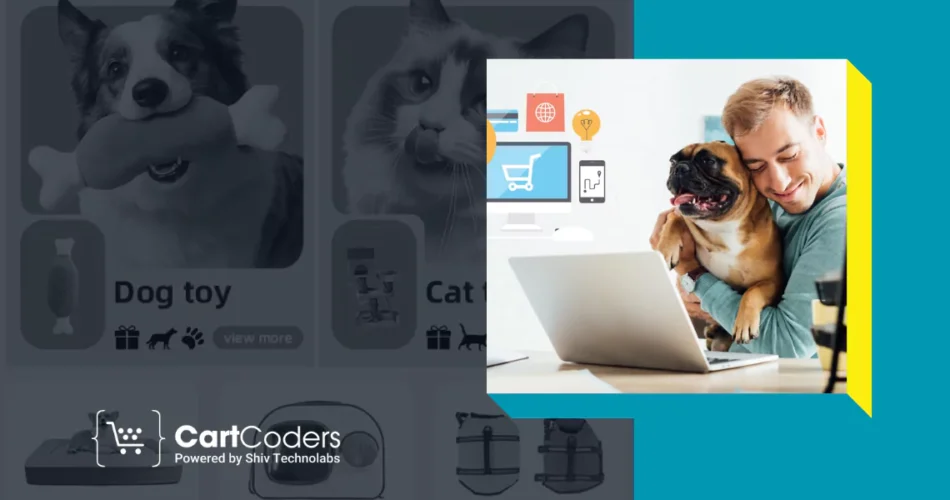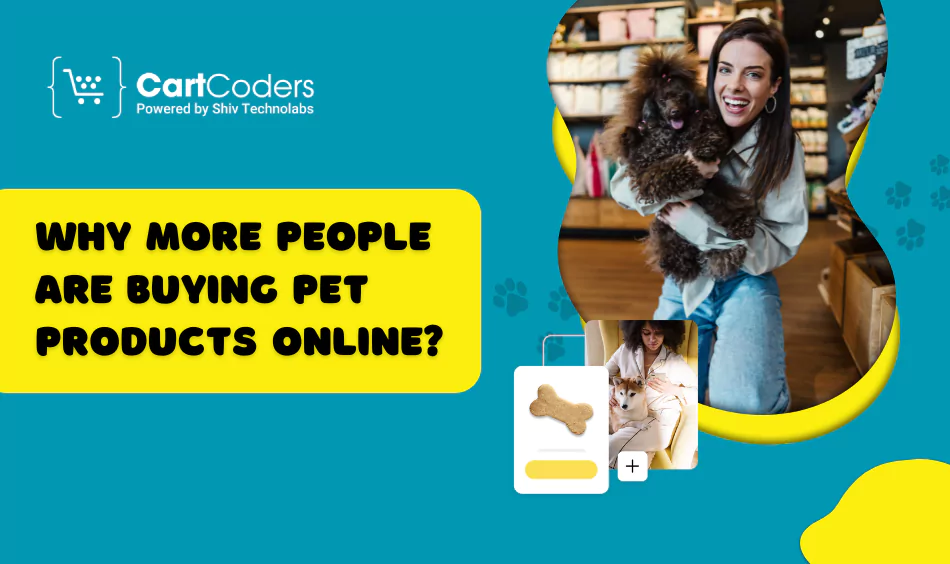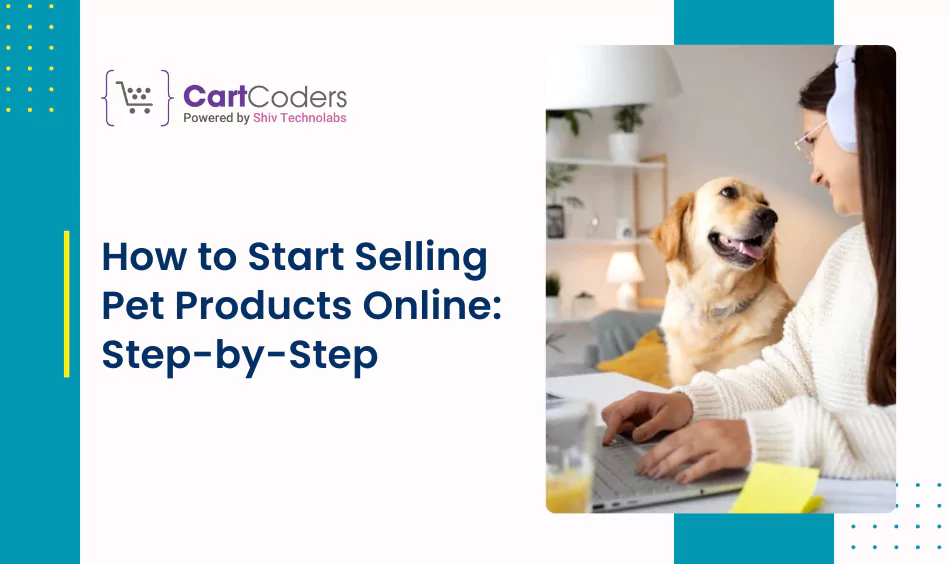Custom Engagement Solutions
Unlock tailored solutions with a free, no-obligation strategy session.
Expert Developers & Engineers on Demand
Scale Your Team with Skilled IT Professionals
Expert Guidance for Digital Transformation

The pet industry isn’t slowing down. Projections show that pet care sales may reach $360 billion by 2026. A large chunk of that comes from online stores selling pet food, toys, grooming tools, and accessories.
In the U.S., over 68% of pet owners shop online for their pets at least once every three months. In India, online pet product sales have grown by 45% year-on-year, driven by rising pet adoption and changing consumer habits.
What does that mean for you? If you’re thinking about launching a pet supply store, you’re not too late. But success doesn’t come from just listing products. It starts with smart choices, picking the right niche, building a user-friendly store, offering what pet parents need, and creating trust from the start.
This guide shows you how to do that, step by step. Whether you want to sell handmade collars or set up a large-scale pet brand, we’ll break down everything you need to know.

Pet parents don’t just shop for price. They look for trust, product quality, and easy delivery. Understanding their habits will help you build a store that sells.
If you plan to sell online, your store should speak directly to these needs. This helps shape everything — from how you write your product descriptions to how you design your homepage.

You’ve seen the numbers, and you understand the buyer mindset. So what’s next? It’s time to set up your store the right way.
Each step is written with one goal: to help you start selling pet products online without guesswork.
Before you start adding products or setting up pages, take a step back and look at the space you’re entering. The pet supply business is full of opportunities, but also full of competition.
To stand out, you need clarity on three things: what’s trending, who you’re selling to, and how your brand will speak to them.
Start by observing what pet owners are buying right now. Are dog parents buying more natural treats? Are cat lovers spending more on toys or scratching posts?
Are people searching for grooming kits they can use at home? Use that insight to shape your product list and store tone.
Once that’s done, it’s time to build your brand. Not just a name or a logo—but a feel. Will your store be playful and fun, or clean and minimal? Are you talking to first-time pet parents or those who treat their pets like their kids? Your branding should feel natural to the people you’re selling to.
Think about color choices, product names, taglines, and packaging ideas that make your store feel familiar and trustworthy.
Now comes the technical part: choosing the eCommerce platform. If you want speed, flexibility, and long-term growth, Shopify is a safe bet. It’s beginner-friendly, mobile-ready, and packed with features made for stores like yours.
You’ll get built-in payment options, shipping settings, and inventory tools that let you focus on selling, not managing tech. You can choose from free or premium themes, and most don’t require any coding.
At the end of this step, you should know:
Once that’s clear, you’re ready to build the actual store.
Once you’ve locked in your brand voice and chosen your eCommerce platform, the next step is to bring your pet store to life.
This is where visitors become customers, or bounce in a few seconds. Your store’s design, layout, and product pages will shape that decision.
Start with your theme. Choose a clean, responsive layout that looks good on both desktop and mobile. For pet products, visuals matter—people want to see the texture of a leash, the shape of a chew toy, or the color of a grooming glove.
Avoid cluttered designs. Stick to large product images, short headlines, and easy-to-read fonts.
The homepage comes first. It should answer three questions instantly:
Keep your navigation simple. Add top-level links like Home, Shop All, Dog Products, Cat Products, and Contact.
If you’re offering subscriptions or bundles, those should be easy to spot. A pet store isn’t a place to be clever with page names—stick to what’s clear and expected.
When you get to product pages, keep one thing in mind: details sell. Add high-quality photos from different angles, write short but clear descriptions, and include specs where needed—size, material, ingredients, etc.
Use simple sizing charts or feeding guides if your product needs it.
Also add:
If your product has a backstory or benefit (like “made from recycled rope” or “vet-approved formula”), make that part of the content. Write like you’re helping a pet parent decide if this is right for their dog or cat.
With your store ready and product pages designed, it’s time to get the actual products you’ll sell. How you source your inventory depends on your business model, budget, and how much control you want over the delivery process.
If you’re stocking your products, start by finding reliable wholesale suppliers or manufacturers. Reach out, ask for samples, check packaging quality, and test shipping speeds. This route gives you full control, but it also means you’ll need space to store products and time to pack and ship orders.
If you don’t want to hold inventory, dropshipping is the next option. You’ll partner with suppliers who ship products directly to your customers. It’s low risk and fast to start, but you’ll need to vet every supplier carefully. Slow deliveries, poor product quality, or unbranded packaging can hurt your store’s reputation fast.
A third route, especially for small stores or new sellers, is private labeling. You buy ready-made pet products and sell them under your brand. This works well if you want custom packaging and better margins without creating products from scratch.
Also, set up inventory alerts in your store backend. Whether you’re managing 20 products or 200, knowing when stock runs low keeps you from losing sales.
Must Read: Best Selling Pet Products Online
Getting your pricing and logistics right is just as important as the products themselves.
Start by setting a pricing strategy that covers your costs—product, packaging, platform fees—and still gives you a profit. Keep prices clean and simple. Flat numbers like $14.99 are easier for buyers to process. If you’re offering bundles or subscriptions, price them clearly and show savings upfront.
Make sure your tax settings are accurate. Use platform tools (like Shopify’s built-in tax calculator) to handle taxes based on where you sell. If needed, talk to an accountant to stay compliant.
For shipping, pick one model and stick to it:
Whatever you choose, explain it clearly on your product pages and in a Shipping & Returns section. Set delivery expectations so buyers know what to expect.
Simple, clear pricing and shipping build trust and keep buyers from dropping off at checkout.
Your store is ready. Products are listed. Pricing and shipping are set. Now it’s time to bring in your first customers.
Start by sharing your store with people who already trust you, friends, family, or pet groups you’re part of. A few early orders and real reviews will give your site social proof. Don’t wait for everything to be perfect; start with what you have.
Next, focus on channels where pet owners already hang out. Instagram is great for sharing product shots, pet photos, and behind-the-scenes packing videos. Facebook works well for running local ads or joining pet owner communities. You can also try Pinterest for visual content or YouTube Shorts if you’re comfortable on camera.
If you’re launching with a budget, run targeted ads on platforms like Meta (Facebook & Instagram). Start small, test creatives, see which products get clicks, and refine from there. Focus your ads around one idea at a time: a seasonal offer, a new collection, or a pet parent problem your product solves.
Also, set up email signups from day one. Offer a small discount or freebie in exchange for their email, and follow up with a welcome email that tells your story. It doesn’t have to be fancy—just honest and personal.
Track what’s working and what’s not. If a product page gets views but no sales, tweak the images or copy. If a certain post brings traffic, build more like it. Momentum comes from small wins, not viral moments.
Getting sales is good. Getting repeat buyers is better.
Make every order feel personal. Add a thank-you note, pack it well, and follow up with tracking updates. These small details build trust.
Reply fast to questions. Whether it’s WhatsApp, email, or social, quick, honest support makes you memorable.
If there’s a problem, fix it without excuses. That one good experience could lead to ten more.
Keep in touch after the sale. Share tips, new arrivals, or just check in. Good service turns buyers into regulars.
CartCoders helps pet brands launch fast, mobile-friendly Shopify stores built for real sales.
Whether you’re starting fresh or switching platforms, our team can help you set up, design, and grow your online pet business—step by step.
Selling pet products online isn’t just about having great products—it’s about building trust, offering real value, and creating a store that feels like it belongs to the pet parent community.
Start small. Stay consistent. Listen to your buyers. The rest builds over time.Ready to launch your pet store? Get in touch with CartCoders.
Projects delivered in 15+ industries.
95% retention rate, building lasting partnerships.
Serving clients across 25+ countries.
60+ pros | 10+ years of experience.